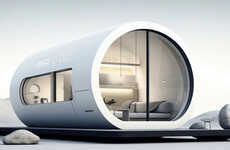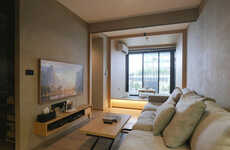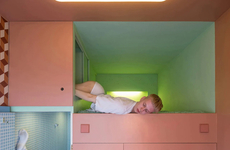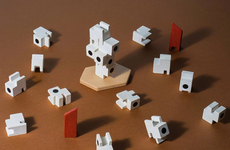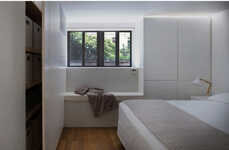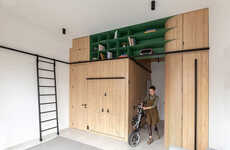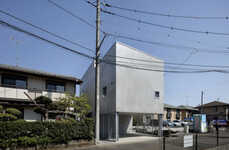
1972 by Noritaka Minami is Depressingly Futuristic
Meghan Young — September 27, 2013 — Fashion
References: noritakaminami & fastcoexist
Shoebox condos and even more extreme examples of micro-living might be all the rage right now, but people have been living in Japan's Nakagin Capsule Tower for decades. Captured with fresh eyes for the photo series titled 1972 by Noritaka Minami, a photographer based in Boston and Los Angeles, the dystopian complex was created for a post-war Japan. Created under the banner of 'Metabolism,' it heralded "a new type of architecture that attempted to overcome the problems that plagued traditional urban planning," according to Minami.
1972 by Noritaka Minami captures the state of the tower today. Comprised of 140 capsule units, all of which are just over 100-square feet, some are used as offices, weekend homes and primary housing. Although very modular, the cramped quarters are anything but comfortable as it is easy to see.
1972 by Noritaka Minami captures the state of the tower today. Comprised of 140 capsule units, all of which are just over 100-square feet, some are used as offices, weekend homes and primary housing. Although very modular, the cramped quarters are anything but comfortable as it is easy to see.
Trend Themes
1. Micro-living - The trend of micro-living, as seen in Nakagin Capsule Tower, continues to gain popularity, presenting opportunities for innovative modular housing solutions.
2. Urban Planning - The focus on overcoming traditional urban planning issues, as exemplified by Metabolism architecture, opens doors for disruptive innovations in urban design and infrastructure.
3. Compact Office Spaces - The utilization of capsule units as office spaces within Nakagin Capsule Tower highlights the potential for compact and efficient office solutions in highly populated urban areas.
Industry Implications
1. Architecture - The field of architecture can explore new approaches to modular housing and urban planning in response to the demand for micro-living and sustainable urban development.
2. Real Estate - In the real estate industry, there are opportunities to develop and market micro-living spaces as an innovative solution for compact urban living.
3. Interior Design - Interior designers can develop strategies to maximize comfort and functionality within limited living spaces, addressing the challenges faced in micro-living environments.
6.6
Score
Popularity
Activity
Freshness

